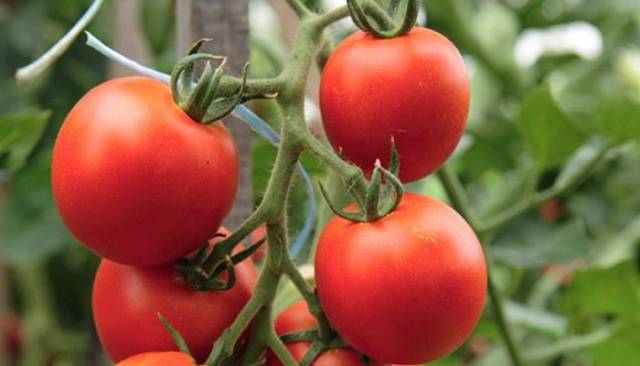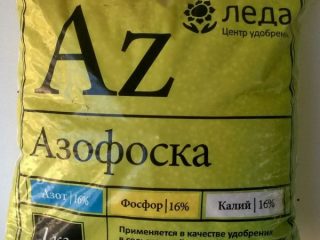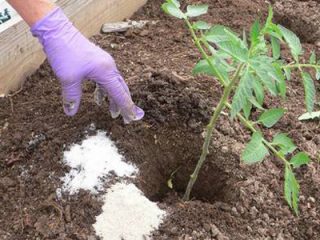Content
About two hundred years ago, when tomatoes came from Europe to Russia, they were called “love apples” for their beauty and similarity in shape to a heart. The real homeland of these beautiful fruits is South America, where there is high humidity and constantly high temperatures. That's why tomatoes love sunlight and warm atmosphere so much. But the North-West of Russia does not indulge in hot summers.
But, thanks to the efforts of Russian breeders, a solution was found, and many tomato varieties appeared that grow and bear fruit safely even in regions with an unstable climate and a rather short summer season. Thus, tomato varieties appeared for the Leningrad region.
Features of growing tomatoes in the Leningrad region
Of course, heated greenhouses are best suited for growing tomatoes in the North-West region, but not all gardeners have them. Possibly quite successful growing tomatoes, if the best varieties of tomatoes for greenhouses, popularly called cold ones, are used. You can even plant seedlings varieties of tomatoes for the Leningrad region immediately to an open garden bed, but then it should be well covered with greenhouse film or covering material. This design is called “film shelter”. In any of these cases, you need to choose tomato varieties for the Leningrad region intended for greenhouses.
First of all, they must be early ripening, have a short growing season, so that in a short summer the tomatoes can ripen, so to speak, on the vine. Preference should be given to medium-sized tomatoes, since tomato varieties for the Leningrad region with large fruits, even those intended specifically for greenhouses, run the risk of not ripening before the onset of cold weather.
Tomato seedlings for the Leningrad region are grown in the usual way. But there is a point that must be completed: hardening off the seedlings. To do this, about half a month before planting the plants in the ground, you should take containers with seedlings outside or into a cold greenhouse for several hours every day. This makes the tomatoes resistant to bad weather, which is important in the rather cold summer season. You also need to keep in mind that tomatoes grow poorly in heavy, clay and acidic soils. It is better to take care in advance about the looseness and airiness of the soil, using the means available for this, such as sawdust, compost, etc.
It is very important to observe the timing of planting tomato seedlings in the ground, especially in such a harsh climate as the Leningrad region. Typically, early varieties for the Leningrad region are planted in a greenhouse on June 1 or 2, and the age of the seedlings should not be less than fifty days.If the variety is ultra-early ripening, then planting is carried out before April 15-20, it is advisable that the greenhouse be heated.
Seven important zones, where Leningradskaya is the first
The choice of variety for planting depends on the zoning zone intended for its cultivation. A good harvest can only be obtained from tomatoes suitable for these conditions. There are seven such zones in total, otherwise they can be called light zones, and for each of them, breeders create varieties that have a certain set of characteristics. The main difference between zoning zones is the light season, more precisely, its length; this determines how successfully tomatoes can be grown without using additional lighting. The Leningrad region is the No. 1 light zone for growing tomatoes, in which it is simply impossible to grow tomatoes in the autumn-winter months due to the short photoperiod, unless additional lighting is used.
The Leningrad region can be classified as a risky farming zone, therefore, in order to get a guaranteed good harvest, it is better to use tomato varieties for the Leningrad region with early and ultra-early ripening, which are suitable not only for greenhouses, but also for open ground. It is important not to forget about timely fertilization and compliance with crop rotation - tomatoes should not grow in the same place for more than 3 seasons to prevent soil depletion.
Main characteristics of tomato varieties for the Leningrad region
- good low light tolerance;
- early maturation;
- must be resistant to harmful diseases;
- independence from low temperatures during the formation of ovaries;
- excellent taste thanks to the accumulation of sugars while maximizing the use of solar energy.
Breeders have not been able to develop many of the best varieties of tomatoes that have these characteristics. Only about thirty are registered in the State Register. Below are just a few of these varieties.
The best varieties
Northern beauty
It belongs to the mid-season salad varieties; it can grow both in a greenhouse and in the open air, but with the use of covering material. The bush is tall, it definitely needs a garter and timely pinching. The not very large pear-shaped fruit weighs from 60 to 120 grams with a pronounced tomato aroma and taste. This variety adapts well to different weather conditions. She does not suffer from fusarium or tobacco mosaic virus.
Chanterelle
An early ripening variety for growing in a greenhouse or under film cover. The bush can reach one meter in height, so staking and pinching is required. Elastic fruits, egg-shaped, bright orange in color, weighing about 130 grams with dense pulp and excellent sweet taste, mass ripening occurs in the second half of July. It is resistant to temperature changes and is resistant to diseases. On one square meter, up to nine kilograms of beautiful tomatoes ripen, perfect for canning.
Mithridates F1
Tall mid-early hybrid (105-110 days). It is a modified analogue of the Evpator hybrid. This variety feels great both in the greenhouse and in the open air. A bunch produces 4-6 red flat-round tomatoes with dense, sweet-tasting pulp weighing 130-150 grams. Resistant to diseases, has good yield - up to 10 kg/m2. Handles transportation very well.
Pharaoh F1
Indeterminate hybrid, average ripening period (105-115 days). The bush is neat, medium-sized.The cluster produces 4-6 red flat-round fruits with dense pulp and excellent taste. The variety is extremely productive - up to 25 kg/m2. Resistant to diseases.
Dobrun
Indeterminate early hybrid (100-105 days). There are usually 5-7 red, flat-round tomatoes on a bunch with dense, sweet pulp, quite productive - from 5 to 7.5 kg/m2. The variety is resistant to tomato diseases.
Tomato varieties for greenhouses
Indeterminate varieties are usually grown in greenhouses, which tolerate frost well and diseases typical of tomatoes, are consistently productive, and are capable of high-quality fruiting even with a lack of sunlight. To compensate for this deficiency, additional lighting is recommended.
Leningradsky early ripening
An early hybrid (90-95 days) with excellent resistance to tomato diseases. The bush is medium-sized, up to 80 cm high. The fruit is red, reminiscent of a tennis ball, smooth, medium-sized (up to 80 grams), the taste is closer to sour. Relates well to temperature changes.
Ural multiple
A mid-season variety, the plant is tall, although it has small leaves. The red fruits are round in shape, slightly flattened, weighing about 60 grams, the taste is sweet and sour. Resistant to major diseases, the yield is consistently high.
Leningrad autumn
Medium late variety (115-130 days), intended only for greenhouses. The plant is tall, powerful, the leaves are large, slightly corrugated. The fruit is red, almost round, with an orange tint, slightly ribbed, sweetish taste, weight 80-130 grams. It tolerates bad weather well and produces ovaries consistently even in the absence of light. Harvest – 6-7 kg/m2. Disadvantages include exposure to tobacco mosaic
The best varieties of low-growing tomatoes
Nevsky
Very early low-growing variety (80-85 days). The bush is quite compact, does not require pinching, with five flower clusters, on which 5-7 fruits are placed. Red round fruit, smooth, weighing about 80 grams, pleasant taste. Has resistance to tomato diseases. The harvest is consistently high.
Dwarf 1185
Mid-early variety (110-115 days). The bush is not tall, about 50 cm, compact, it is very convenient to grow it in open ground. The fruit is small, red, oval-round in shape, weighing about 60 grams. Begins to ripen by August, yield is 3-3.5 kg/m2. The disadvantage is that it is susceptible to late blight.
Baltic
Determinate early variety. The bush is small, compact with light green small leaves. The red fruit is almost round, slightly flattened, not very dense, average weight about 150 grams, with excellent taste, good for salads. Resistant to late blight. Harvest – 4-4.5 kg/m2.
Yablonka
Mid-early determinate variety (115-130 days). The bush has medium branching and small leaves; there is no need to tie it up or pinched it. Red fruit, round in shape, almost perfectly smooth, with a bright tomato aroma and taste, weighing about 100 grams. It is disease resistant and tolerates high humidity well.
Ground Gribovsky 1180
Early ripening determinate variety (95-105 days). The bush is low (from 40 to 55 cm), compact. Red, round, slightly flattened fruits, with slight ribbing, weighing up to 100 grams. Harvest – 4-4.5 kg/m2. It tolerates bad weather well and is suitable for cultivation in the Non-Black Earth Region. It is possible to sow seeds directly into the soil. Among the disadvantages - it does not tolerate excessive humidity, bacterial rot and late blight occur.
Flash
Early low-growing variety (85-95 days).Red, almost round fruits, medium-sized, smooth, weighing up to 80 grams, with excellent taste. Very good in salads and winter preserves. The variety is not prone to cracking and is resistant to late blight. Tolerates extreme weather conditions well. Harvest – 4-4.5 kg/m2. Excellent transportability.
Snow fairy tale
Standard mid-season variety (100-115 days). The bush is quite low, neat, and does not require staking or pinching. The fruit is red, slightly flattened, medium-sized, weighing up to 50 grams, tastes slightly sour. It is very easy to care for, tolerates bad weather well, and is resistant to major tomato diseases. The harvest is consistently high.
Conclusion
In addition to the fact that tomatoes themselves are very tasty and are widely used in cooking, they are also extremely healthy.
- Restore water-salt balance.
- Chromium, which tomatoes are rich in, helps regulate glucose levels in diabetics.
- The high content of chlorogenic and coumaric acids protects against carcinogens that are formed during smoking.
- Thanks to potassium and B vitamins, blood pressure decreases, “bad” cholesterol disappears, which has a beneficial effect on the body of hypertensive patients, etc.
You can learn how to properly grow tomatoes in a greenhouse from this video:



























